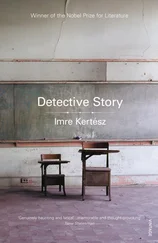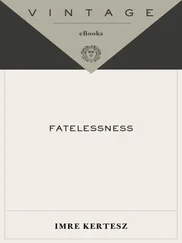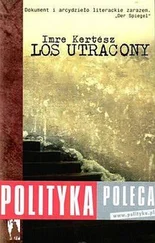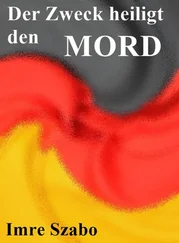At the same time, he took out the cylindrical glass phial from the front of the third drawer down in the filing cabinet and loosened the pliable wax plugs from his ears.
Oglütz.
“That …,” the old boy started to say.
“It’s not worth it, I’m going out anyway,” he reflected. In the series of the various stations of torture the old boy had passed beyond that transitional state when a person attempts to rise above his situation by propounding universal theories. At one time he had decided that Oglütz (and the old boy’s starting to call Oglütz Oglütz may have dated from this decision) embodied a qualitatively new form of being, namely, a visual (or auditory) (or audio-visual) being (which differed radically from, for instance, the) (nowadays in any case barely realisable) (art-loving being, in that Oglütz’s watching) (or listening) (or watching and listening) (habits both in prose and music were confined exclusively to the products, so to speak, of the light-entertainment genre, quiz and game shows, gala evenings, current-affairs programmes, advertisements, or at most, natural history documentaries); and if it is questionable whether this form of existence is satisfying in every respect, there can be no doubt that it is extremely comfortable, because instead of our having to live a many-sided life, it constantly swarms before our eyes — true, only on a screen, and all we can do is be diverted or angered by it, but not influence it, guide it, intervene in it or accept its consequences — yet in that respect, and in that respect alone (not in what happens on the screen), does it not resemble some of our lives? and as a last resort the old boy would even have been able to imagine a pure visual (or auditory) (or audio-visual) being in the shape of someone who has spent decades in front of the screen, so that even in its last moments, when death arrives to summon it, it does not question that it leaves behind a rich, action-packed and varied life …
“Did you get any work done?”
“Of course.”
“Did you make any progress?”
“I pushed on a bit.”
“There was something else I meant to tell you.”
“What was that?” the old boy paused.
“It’s slipped my mind for the moment.”
“Next time write it down so that you won’t forget.”
“Did anyone call?”
“Who would have called?”
“True.”
… As a matter of fact — and this was my point of departure — the composite notion of blood, lust and the demon has always upset me in the form that one encounters it in certain works of art. The image that these works of art present, in connection with certain historical periods and events, of some sort of extraordinary, unbroken witches’ Sabbath, incompatible with human nature in general and dolled up, so to say, with a festive character, simply does not tally at all with my own experiences. Murder in some degree, over a certain time span and beyond a given number, is after all tiring, systematic, and harrowing work, whose daily continuity is not vouchsafed by the participants’ likes or dislikes, bursts of ardour or onsets of disgust, enthusiasm, or antipathy — in short, the momentary mood, or even cast of mind, of single individuals, but by organisation, an assembly-line operation, a self-contained mechanism which does not permit so much as a moment’s time to draw breath. In another respect, there can be no doubt about it, that is what put paid to tragic representation. Where would personalities who are grandiose, exceptional, and extraordinary even in their awfulness fit in? Richard III wagers that he will be evil; the mass murderers of a totalitarian regime, by contrast, take an oath on the common good.
On the other hand, I pondered further, we have impassive, cool, objective reporting of bare facts. Except that this does not really bring us any closer to the subject either. The problem with facts, however important they may otherwise be, is that there are too many of them and they rapidly wear fantasy down. Instead of our coming to terms with them and mingling in their world — ultimately an indispensable requirement for an aesthetic mediation — we are ever more alienated as we gawk at them. Cumulative images of murder become just as lethally tedious and discouragingly tiring as the attendant work itself. How can horror be the subject of an aesthetic if there is nothing original in it? In place of exemplary death, the facts can only serve up mountains of corpses.
At that very time I happened to be reading about the deaths of 340 Dutch Jews in the stone quarry at Mauthausen. On the arrival of the contingent, Ernstberger, the camp’s second officer, made it clear to political prisoner and block clerk Glas that the order was none of them should remain alive more than six weeks. Glas objected: he was sentenced to a beating of thirty lashes, then replaced by one of the criminals. The next day the Dutch Jews were herded off to the stone pit. Instead of using the 148 steps, hewn into the rock, which led down to the bottom, they were forced to slither their way down over the naked stone rubble of the precipitous rock walls. Down at the bottom boards were loaded on their shoulders, onto the boards, massive boulders, and they had to carry these at the double up to the top — albeit this time by way of the 148 steps of the stairway. At times the boulders would slide off the boards with the first few steps on the stairway, crushing the feet of those pressing behind. An accident meant a beating. Already on the first day a number of the Dutch Jews threw themselves into the stone pit from the edge of the rock face. Later on, groups of nine to twelve were to leap together, holding hands, into the chasm. The civilian employees at the quarry put in a complaint to the SS: the shreds of flesh and brain tissue which were clinging to the rocks, they objected, “afford too gruesome a sight.” The rocks were hosed down by a labour squad with powerful water jets: from then onwards prisoner functionaries were posted to stand guard and deal out exemplary reprisals on further offenders. Death wishes, one might say, were here punishable by death. Any of them who did not wish to die with the rest were also killed. It took only three weeks, instead of six, to dispose of them.
I closed the book and put it aside with the feeling that this fact, which I came across at random among 400 pages of further facts (which in themselves are but a modest fraction of a complete list of facts which would take up who knows how many tens of thousands of pages), that these 340 deaths on the rocks, for instance, might rightly find a place among the symbols of the human imagination — but on one condition: only if they had not occurred. Since they did occur, it is hard even to imagine them. Rather than becoming a plaything, the imagination proves to be a heavy and immovable burden, just like those boulders in Mauthausen: people do not want to be crushed under them. That, however, leaves us at risk of falling behind our times: we live our lives without being enriched by the experiences of our era. Yet maybe, I pondered, it is the obsessive monotony of those experiences with which the imagination wrestles ineffectually. At the time I was reading a novel published under the title The Long Voyage , and in it came across Sigrid, the beautiful blond fashion model who, I read, was
… there only in order to make us forget the body and face of Ilse Koch, that straight, stocky body planted solidly on her straight, sturdy legs, that harsh, sharp, incontestably German face, those fair eyes, like Sigrid’s eyes (but neither the photographs nor the newsreels taken at the time, and since used and re-used in certain films, enabled anyone to ascertain whether Ilse Koch’s fair eyes were green like Sigrid’s, or blue or light blue or iron gray — more likely iron gray), Ilse Koch’s eyes fixed on the naked torso, on the bare arms of the deportee she had chosen as her lover a few hours before, her gaze already cutting out that white, sickly skin along the dotted lines of the tattoo which had caught her attention, her gaze already picturing the handsome effect of those bluish lines, those flowers or sailing ships, those snakes, that seaweed, that long female hair, those pinks of the wind, those sea waves and those sailing vessels, again those sailing vessels deployed like screaming gulls, their handsome effect on the parchment-like skin — having, by some chemical process, acquired an ivory tint — of the lampshades covering every lamp in her living room where, at dusk, she had smiled at the deportee brought in first as the chosen instrument of pleasure, a twofold pleasure, first in the act of pleasure itself and then for the much more durable pleasure of his parchment-like skin, properly treated, the colour of ivory, crisscrossed by the bluish lines of the tattoo which gave the lampshade its inimitable stamp, there, reclining on a couch, she assembled the officers of the Waffen-SS about her husband, the Commandant of the camp, to listen to one of them play some romantic melody on the piano, or something serious from the piano repertory, a Beethoven concerto perhaps …
Читать дальше












